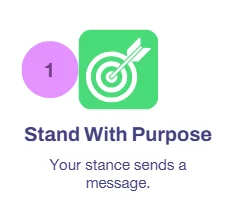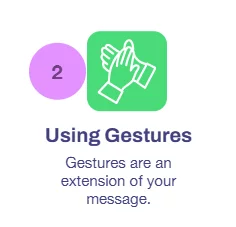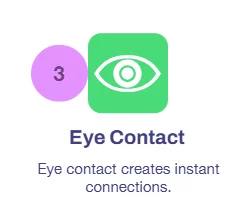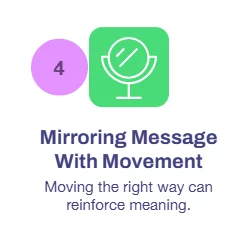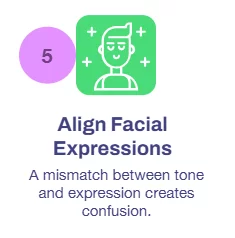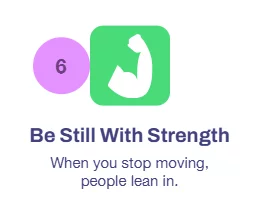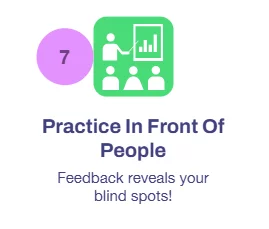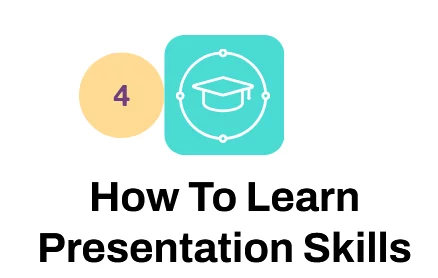
Mastering Body Language & Eye Contact
Powerful communication goes far beyond spoken words.
Your body language and eye contact speak volumes, often louder than your actual voice.
These non-verbal signals can build trust, command respect, and elevate your presence on stage or in the boardroom.
I’ve presented in front of skeptical CEOs and distracted conference-goers, and I can tell you:
Mastering non-verbal cues can be the difference between being heard and being remembered.
1. Stand With Purpose
Before you even open your mouth, your stance sends a message.
How you hold yourself can tell an audience whether you’re confident, nervous, or unsure.
As we always say on our presentation skills courses: solid, grounded posture communicates that you’re present, credible, and in control.
It also makes you feel more stable mentally, there’s a real psychological feedback loop between body and brain.
Why It Matters:
Your posture sets the tone before you say a word.
Confident, grounded posture signals authority and openness.
What To Do:
-
Keep your feet hip-width apart.
-
Relax your shoulders.
-
Distribute your weight evenly to avoid rocking or swaying.
-
Pro insight: Early in my career, I caught myself shifting nervously while speaking. Planting my stance instantly made me feel more in control.
2. Use Gestures That Reinforce
Gestures aren’t just add-ons, they’re extensions of your message.
When used intentionally, they help illustrate abstract concepts, break down complexity, and hold attention.
But gestures must be purposeful.
Wild or repetitive movements can distract, while fidgeting often signals anxiety or a lack of preparation.
Why It Matters:
Hand gestures can emphasize key points and help illustrate complex ideas.
Tips For Impactful Gestures:
-
Keep gestures within your “power zone” (between shoulders and waist).
-
Match gestures to your message – don’t overdoing it.
-
Practice key movements with scripted lines.
-
Watch Out For: Fidgeting with clothes or objects. These unconscious actions can distract and signal anxiety.
3. Make Eye Contact With Intention
Eye contact is one of the fastest ways to build rapport and demonstrate confidence.
It creates a shared space of attention between you and your audience, making your words more personal and believable.
When done correctly, it invites trust and fosters connection, but when neglected or overdone, it can have the opposite effect.
Why It Matters:
Eye contact creates connection. It shows confidence, encourages engagement, and builds rapport.
How To Master It:
-
Maintain eye contact for 3–5 seconds with individuals in your audience.
-
Scan the room, not just the front row.
-
Don’t stare, make it natural and inclusive.
-
Field tip: I once shifted my delivery style after realizing I was only making eye contact with the center row. Full-room scanning changed the energy instantly.
4. Mirror Your Message With Movement
Movement is a physical way to underscore meaning.
It helps organize your talk and adds dynamism, drawing your audience’s attention to what matters.
However, movement needs to be coordinated with your message.
Aimless pacing drains energy from your delivery, while well-timed steps or shifts can signal transition and intention.
Why It Matters:
Movement can reinforce meaning. But if done poorly, it becomes a distraction.
How To Move Effectively:
-
Use purposeful steps to signal transitions.
-
Move closer during emotional stories; step back when summarizing.
-
Avoid pacing aimlessly – it dilutes impact.
-
Practice Technique: Rehearse key moments with marked stage points. It creates flow and anchors your message.
5. Align Facial Expressions With Emotion
Your face tells your audience how to feel.
When your expression matches your words, people are more likely to believe you, and remember your message.
A well-timed smile, a look of concern, or raised eyebrows for curiosity can all reinforce what you’re saying.
This is extremely important to keep in mind when telling a story!
Static or mismatched expressions can confuse your audience or make you appear disengaged.
Why It Matters:
A mismatch between tone and expression creates confusion.
Consistent facial cues enhance clarity and connection.
Expressive Habits:
-
Smile genuinely when sharing positive ideas.
-
Let your brows express curiosity, concern, or excitement.
-
Avoid a fixed expression – variety keeps attention.
6. Be Still With Strength
In a world of constant motion, stillness stands out.
When you choose to hold your ground and remain still during key moments, you create intensity and focus.
It tells the audience that what you’re about to say truly matters.
Rather than being static or frozen, this kind of stillness is intentional and powerful.
Why It Matters:
Strategic stillness can create gravitas.
When you stop moving, people lean in.
When To Be Still:
-
During your opening statement.
-
Before delivering a key insight.
-
As you conclude with a powerful message.
-
Stillness signals control – and earns attention.
7. Practice In Front Of People
Non-verbal communication can’t be polished in a vacuum.
You need real feedback to understand how you’re coming across.
Practicing in front of others – whether colleagues, mentors, or even friends – helps you identify distracting habits and build the confidence to project yourself fully.
Why It Matters:
Feedback reveals blind spots.
Practicing with others builds confidence and presence.
How To Practice:
-
Record yourself and note habits.
-
Ask peers to watch for distracting movements.
-
Practice in full attire to replicate real conditions.
Final Thoughts
Non-verbal communication isn’t about perfection – it’s about intention.
When your body and eyes reinforce your message, you become more than a speaker.
You become someone worth watching.
Speak with your whole self, and you’ll leave a lasting impression.
For a guide on verbal communication, check out our guide on speaking like a pro.
- Facebook: https://www.facebook.com/profile.php?id=100066814899655
- X (Twitter): https://twitter.com/AcuityTraining
- LinkedIn: https://www.linkedin.com/company/acuity-training/
